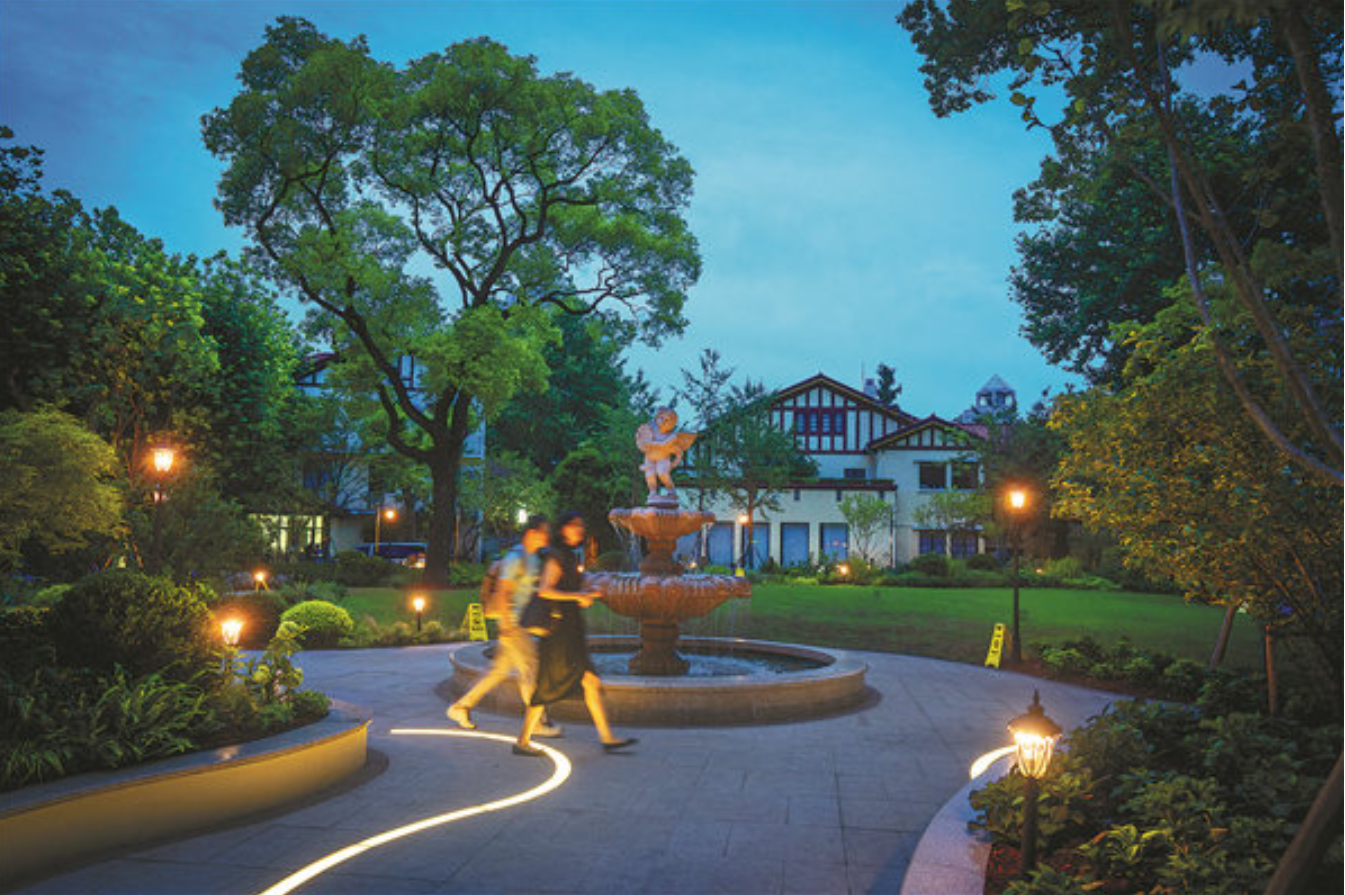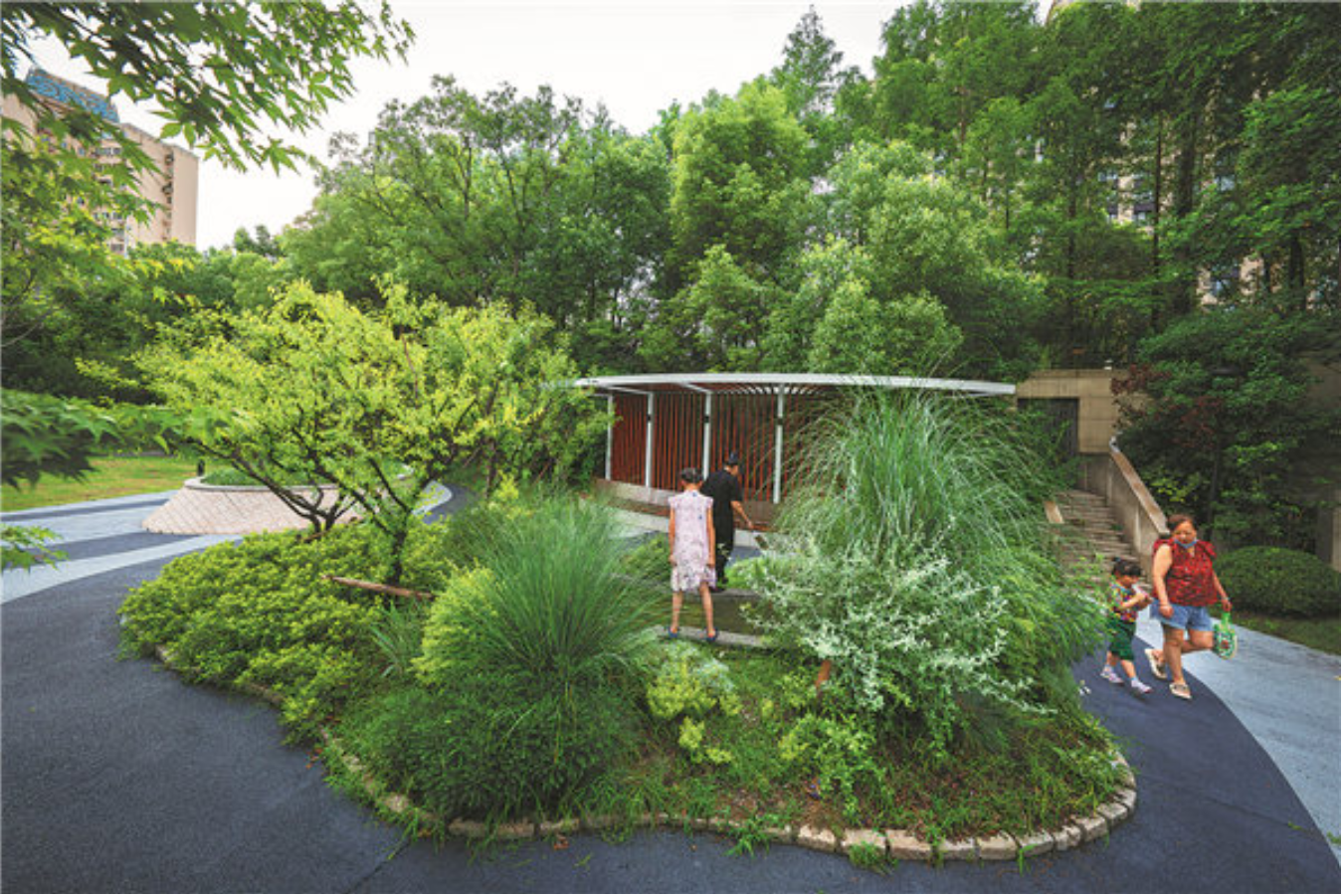今日上海
生活在大自然的口袋里 - 2023年07月23日
Living in nature's pocket

Number of parks and green spaces in the city continues to grow as authorities look to improve quality of life, Zhou Wenting reports.
In the spring of 2013, Yu Fangfei spent more than 90 minutes traveling by public transport from her home in southwest Shanghai's Minhang district to Gucun Park in the city's northern Baoshan district just to admire the cherry blossoms.
That spring, around 1.05 million visitors flocked to the park for the same reason.
This year, courtesy of a small new public park near her home, Yu spent just five minutes traveling on foot to admire the blooms.
According to Yu, the park was converted from a former construction site that was left idle for several years. Nowadays, the park is bustling both day and night, especially in the spring and summer.
It is just one of the many pocket parks that have sprouted up in the city since 2021 because of the campaign to create more green spaces for Shanghai residents to rest and relax and to spruce up communities.
The campaign to create such leisure spaces is part of Shanghai's ongoing urban master plan.
Xu Mingqian, deputy director of the Shanghai Municipal Bureau of Planning and Natural Resources, said at a news conference on June 30 that the local government will step up the construction of community parks and pocket parks, and introduce more cultural, tourism, and sports resources to neighborhoods, providing residents with pleasant, highly accessible, and interconnected green spaces.
The plan also involves optimizing community circles so that every resident will have access to diversified services within a 15-minute walking radius from their home.
Pocket parks originated in the United States in the 1960s. Other cities around the world, including Venice and Barcelona, also have a mature network of pocket parks that brings nature into their cityscapes.
According to official statistics, there were 22,463 hectares of parks and green spaces in Shanghai as of the end of 2021, up from 16,848 hectares in 2012. This means that green spaces 27 times the size of the Shanghai Chenshan Botanical Garden, the largest botanical garden in the city, have been added to the city over the last decade.
Zhu Xinjun, chief engineer of the Shanghai Landscaping and City Appearance Administrative Bureau, said that the goal was to build many small parks instead of a few large ones as this would enable more residents to enjoy such spaces.
Shanghai had, by 2022, completed the construction or renewal of 390 pocket parks, and it will add another 80 to that number this year. The ultimate goal is to build at least 1,000 parks in Shanghai by 2025.

A new pocket park in Putuo district located just outside a residential community.
Among the new pocket parks located in downtown Shanghai are some spaces that previously belonged to institutions. One such park is situated within a French-style historical building located at No 87 Wuxing Road in Xuhui district.
The three-story garden villa with red ceilings and white walls is presently used as the office of the Shanghai Research Institute of Sports Science. It previously served as the residence of a senior executive of the Credit Agricole Corporate and Investment Bank of France.
A new pocket park was added to the city in March when the research institute agreed to remove its fences and open up nearly 1,800 square meters of its green space to the public. The Xuhui district authority then created new pathways in the garden and added plants, benches, tables and chairs. The original fountain located in the park was retained.
Zhang Jing, an official responsible for greening matters at the Putuo District Landscaping and City Appearance Administrative Bureau, says that authorities at the district level have been holding discussions with other public institutions to encourage them to open their green spaces to the public.
The reason for this, says Zhang, is that it is too costly to relocate residents just to construct new green spaces in the downtown areas.
"Regarding renovating the existing public green spaces, which might have been built decades ago, we'll improve the facilities, adding lights, seats and corridors to make such spaces not only generate ecological effects but user-friendly for people," she says.
In November, idle land spanning around 900 sq m on East Yuhang Road in Hongkou district was renovated into a pocket park specially catering to children. Here, the plastic footpath features colored English letters and the fences are adorned with cartoon and animal characters and distorting mirrors.
"I heard that the developers even chose plants that do not have thorns as this would be safer for the children," says a resident surnamed Wang.
"Many of my neighbors are very pleased that we have such a fun facility located close by. We really appreciate the effort spent on designing details that satisfy the needs of people of different age groups," she says.
Zhou Huajie, the director of the Shanghai Public Green Space Construction Affairs Center, says that residents will always be consulted before any park plan is finalized.
"The whole point about high-quality ecological spaces is inspiring people to share these spaces. This is a way to allow people to actively participate in jointly creating a better city and life," he says.
The building of parks is just one way the Shanghai government has gone about connecting its residents with nature. In late 2017, authorities announced a plan to connect the core areas on both banks of the Huangpu River and create spaces for walking and cycling.
At the end of 2020, the authorities announced a similar plan that would see the waterfront areas on both sides of the Suzhou Creek connected and opened to the public.
In 2021, the Shanghai authorities said they would construct 30 country parks over the following 15 years. The eight that have been open so far have already become massively popular among the local populace.
Source: China Daily
